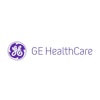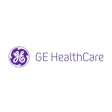 Michael J. Cannavo.
Michael J. Cannavo.
The concept of using a central storage repository for PACS dates back to the early 1990s. Sadly, it took almost 20 years for the concept to advance from basic hosted storage to a full VNA. However, early VNAs didn’t take hold in the market as early offerings didn’t seem to live up to the hype.
That’s no longer the case. As part of an enterprise imaging strategy, individual silos for independent imaging systems are now being replaced by a single data storage repository. This repository can store radiology images and data but also images and data from other clinical systems as well. These include cardiology, pathology, dermatology, and others as well as images and associated data from “visible light” sources such as endoscopes, ophthalmoscopes, and bronchoscopes, etc.
One of the biggest promoted advantages of early VNAs was information lifecycle management (ILM). This involved the purging of files after they had reached the mandated legal retention date. Storing data in one central location also should have made it easier to manage the data by reducing the effort associated with keeping track of where that data is. This reduced medicolegal liability, assuming that there was only one copy of the data.
While all of this seemed promising, there was no clear-cut definition of what was meant by ILM or how it would work. This confusion added to VNA acceptance challenges.
Today’s VNAs
Today’s VNAs are different. Standards-based VNAs can be the heart of an enterprise imaging ecosystem or supplement existing VNA functionality. Unlike PACS, a VNA is not dependent on a vendor’s software although many are sold with a new PACS implementation and are vendor-neutral.
With so many smaller facilities that have disparate PACS being acquired by larger entities, VNAs make perfect sense to replace the existing independent archive silos. If/as desired, this also allows a facility to maintain its existing PACS until it has reached its end of life, thereby preserving the investments made in them. All that’s changed is the access point of the data. It also allows access to other studies from all other PACS within the organization.
A VNA allow you to do the following:
- Store, manage, and exchange any type of imaging and non-imaging content including video audio and other file types and share it across the enterprise often using a single sign-on with active directory protocols.
- Improve PACS workflows and, where applicable, enhance and supplement existing VNA operations.
- Reduce management complexity.
- Minimize your total cost of ownership by sharing costs with other departments (if IT owned and maintained).
- Eliminate data migrations when replacing departmental PACS.
- Aid in disaster recovery.
- Provide the foundation for delivering improved patient-centered care.
Improving outcomes
The primary goal and benefit of patient-centered care is to improve individual health outcomes. VNA’s allow both the patient and their clinician to use any facility anywhere without having to travel where the prior study was done even if at an outside facility. This helps improve patient satisfaction. For the clinician, a VNA can help enhance their reputation among health care consumers while also providing better morale and productivity among those also treating the patient. Resource allocation is also improved and expenses and increased financial margins reduced by providing a continuum of care.
VNAs also allow more complex features such as DICOM tag morphing (a method of handling the inconsistencies in the way metadata is treated by the current PACS), image routing and purge rules, system monitoring, and more. The newest versions also address DICOM; DICOMweb; HL7 and Integrating the Healthcare Enterprise (IHE) integration profiles; and Fast Healthcare Interoperability Resources (FHIR) -- an HL7 standard that defines how healthcare information can be exchanged between different computer systems regardless of how it is stored in those systems; and associated approaches that describe how individual packets of information can be easily shared.
It’s important to understand that most existing PACS, and even current PACS being offered, often have one or more proprietary features that can bind you to the vendor. This can be the way they do their database management, use of proprietary data-compression algorithms, the use of file formats outside of the DICOM standard, and a host of other non-standards-based items.
This means when moving from that platform to another you have to incur costly and time-consuming data migration. In a best-case, low-volume scenario, this can take months and costs tens of thousands of dollars. In a high-volume scenario it can take years and hundreds of thousands of dollars or more.
Making matters worse, you typically never recover 100% of the data in a data migration, with 95% recovery typical and 80% not unheard of. At a 95% recovery rate, migrating five years worth of studies from a low-volume (150,000 exams per year) facility means almost 40,000 studies (not just images) may be lost.
Scalability
VNAs are widely scalable and can accommodate the growing volume of imaging data, as well as expanded to meet the evolving needs of a healthcare organization. This includes using data analytics, AI software, and other applications where accessing prior data can be useful.
As most VNAs are owned and maintained by the IT department (in conjunction with the provider), data security is maintained to the level equal to all other clinical systems are and are not subject to whatever the vendor decides is sufficient.
A VNA also enables seamless communication between different healthcare IT systems using a standard HL7 interface. These systems include PACS, RIS, electronic health record (EHR), and others without having to write a custom (and costly) application programming interface (API) that may require updating each time one of the connected programs is updated.
By consolidating medical images and associated data in a centralized repository, VNAs can also help streamline clinical workflows, reduce duplicate imaging, and enhance overall patient care. Last, but certainly not least, VNAs can reduce operational costs by eliminating the need for multiple, separate storage systems and promoting more efficient medical image management.
Many companies today offer a DICOM archive. This is NOT the same as a VNA, even though technically they both fulfill the basic needs of storage. There are three primary differences between these two entities:
- A VNA is able to perform “context management,” presenting data in a format that is different from the original stored format. This process is also known as tag morphing.
- A DICOM archive does not interface with RIS and/or hospital information system (HIS), whereas a VNA can be interfaced with RIS and/or HIS.
- DICOM archives store only DICOM objects, whereas VNA stores DICOM objects as well as non-DICOM. These may include objects such pdf, scanned documents, audio, and video from both ultrasound and cardiology studies, color images, and others etc.
Known industry wide as the PACSman, Michael J. Cannavo is an independent PACS consultant. He can be reached at [email protected] or by phone at 407-359-0191.



